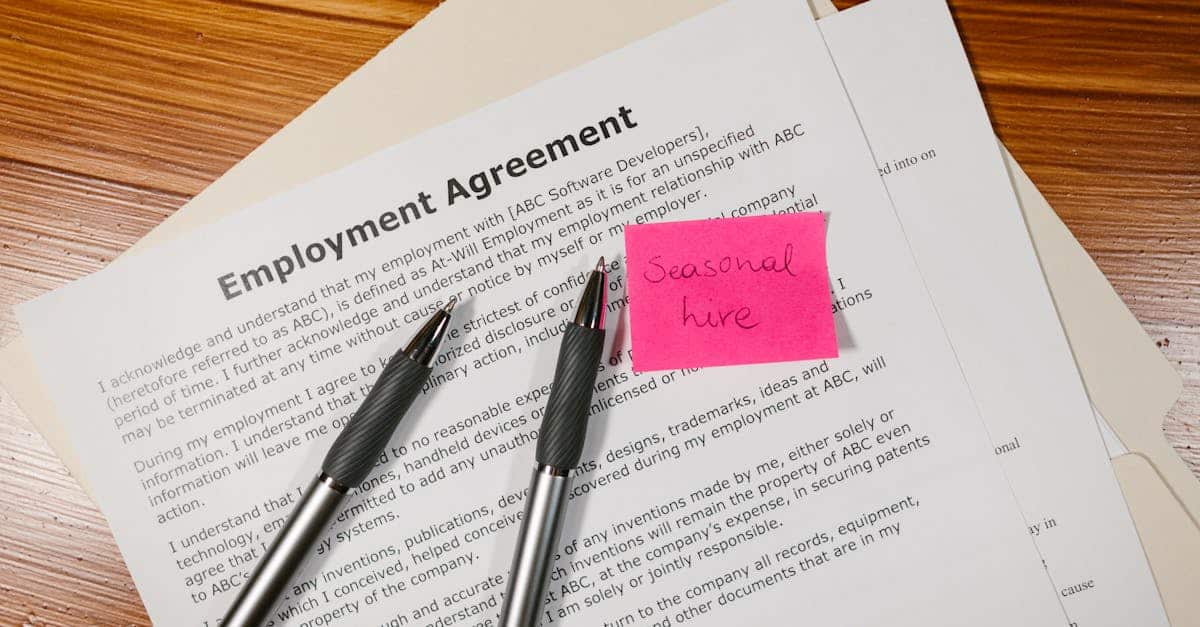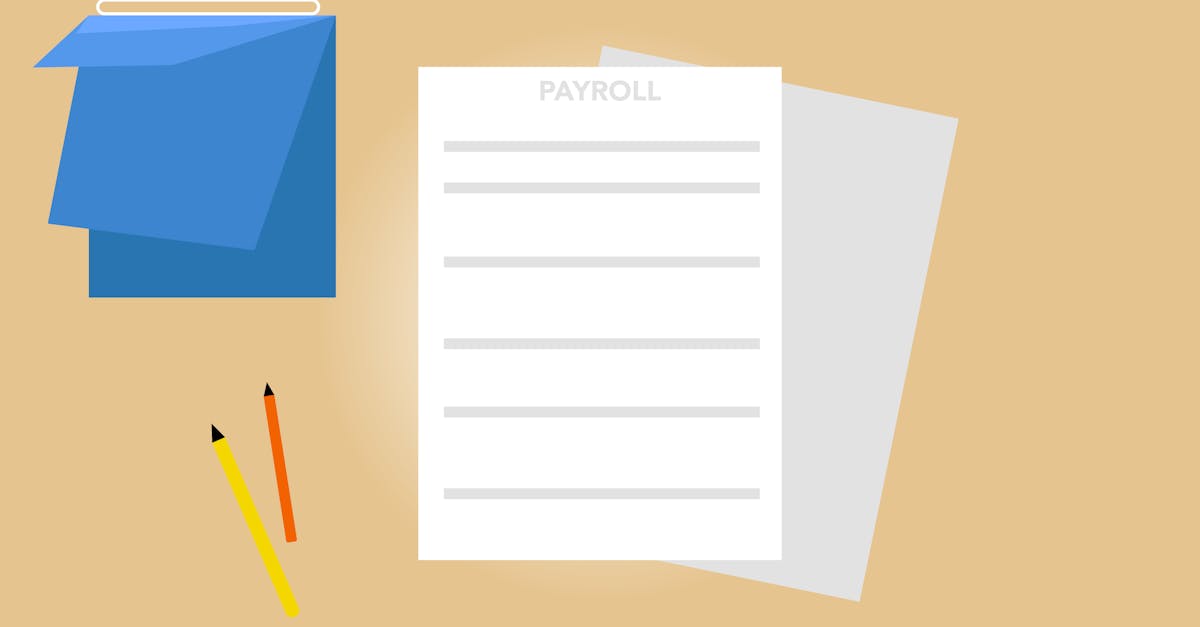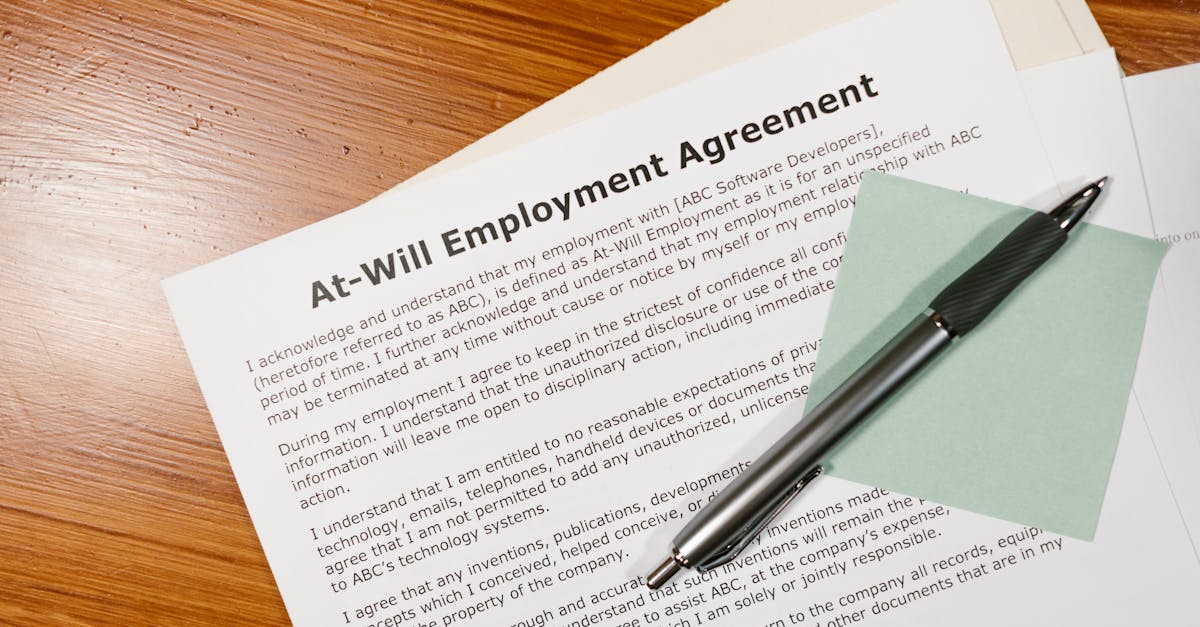
Introduction
Why this matters now: Missed contract dates, manual approvals and siloed documents create compliance risks, payroll errors and avoidable disputes — and HR teams shoulder the fallout. Treating employee agreements as living data, not static files, changes the game: automated reminders, decision gates and integrated signatures stop lapses before they start and give you the audit trail that holds up in a dispute.
This post walks through the practical steps HR needs next: tracking critical lifecycle events (probation, renewals, pay reviews, visa deadlines), designing automated renewal and reminder workflows, enforcing version control and approval gates, cascading changes across payroll and benefits, and integrating with HRIS and e‑sign tools. Read on for starter templates and workflows that deliver quick wins and make contract management a predictable, low‑risk part of running your business.
Critical lifecycle events HR must track (probation end, renewals, pay reviews, restriction expiry)
Why track lifecycle events? Employee agreements create ongoing obligations — from probation end dates to restriction expiry — and missing a date can expose the company to compliance risk or a dispute. Treat these dates as business-critical rather than administrative.
Key events to record
- Probation end — triggers confirmation, performance review, or termination notice.
- Contract renewals and fixed‑term expiry — schedule offer/renewal conversations well before the end date.
- Pay reviews and bonus cycles — link to compensation terms in the employment contract and budget windows.
- Restriction expiries — non‑compete, garden leave, and confidentiality restriction end dates.
- Visa and right‑to‑work deadlines — start renewals 90–180 days ahead for international hires.
- Probationary and statutory notice windows — ensure automated calculation of notice windows and minimum statutory obligations.
Practical fields to capture
Store structured fields in your contract record: event type, trigger date, reminder offsets (e.g., 60/30/7 days), approver, and required outcome. This makes it easy to generate compliance lists and export for audits.
Use this approach for all employee agreements, whether full‑time, part‑time, or contractor records: consistent metadata prevents missed obligations and supports reporting across jurisdictions (including employee agreements Australia requirements).
Designing automated renewal and reminder workflows to avoid lapses and disputes
Design principle: automate decisions you can, human‑review exceptions you must. Automation handles reminders, renewals, and routine approvals — reducing manual errors and speeding response.
Workflow components
- Trigger rules — e.g., 90/30/7 days before contract expiry or restriction expiry.
- Template-based notifications — use standardized messages linked to the employee contract template or offer letter to reduce ambiguity.
- Escalation paths — automatic escalation to manager, HRBP, and legal if no response within X days.
- Decision gates — conditional flows for renew, end, or renegotiate paths.
- Record updates — when a renewal is accepted, auto‑attach the signed document and update lifecycle dates.
Reducing disputes
Automated workflows should include a clear audit trail of communications and the exact template used. Consider linking the original employment agreement or offer so the employee and manager always see the same source of truth. If you need offer and renewal forms, keep a canonical job offer letter and employment agreement in your workflow: https://formtify.app/set/job-offer-letter-74g61 and https://formtify.app/set/employment-agreement-mdok9.
Version control, approval gates and audit trails: keeping signed agreements defensible
Keep a single source of truth. Store only approved drafts and signed versions. Avoid multiple uncontrolled copies in shared drives.
What to capture for each version
- Version identifier and change summary.
- Author and approvers with timestamps.
- Signature metadata (who signed, method, IP/user, timestamp).
- Reason for amendment and linked correspondence.
Approval gates and policy
Define approval gates by risk and role. Examples:
- Standard changes (title, pay within band): manager + HR approval.
- High‑risk edits (non‑compete, senior hire): HR + legal + exec approval.
Audit trail practices: retain immutable logs, store the signed PDF, and preserve the exact template used. This makes employee agreements legally defensible in disputes and clarifies employee agreement vs contract nuances for reviewers.
Using data triggers to cascade changes (compensation updates, benefits enrollment, visa status)
Think of contracts as data-driven sources of truth. When a core field changes, it should cascade updates across systems to keep payroll, benefits, and compliance in sync.
Common cascade scenarios
- Compensation changes — update payroll feeds, tax withholdings, and benefits eligibility dates.
- Benefits enrollment — trigger COBRA/insurance windows or stock plan eligibility.
- Visa status changes — start immigration renewals and right‑to‑work checks.
- Role or location change — update applicable workplace law and tax jurisdiction rules.
How to implement triggers
Use event-driven architecture or webhooks to notify downstream systems. Map fields consistently (e.g., base salary, FTE percentage, job family, legal entity). Always include a manual override and an approval gate for sensitive cascades like pay or change in employment type.
Document the business rules that translate contract terms into system actions so HR and payroll teams agree on outcomes — this is critical when using templates such as an employee contract template or employee agreements sample as your source documents.
Integrating contract management with HRIS, payroll and e‑sign tools to reduce manual touchpoints
Integration priorities: HRIS synchronization, payroll feeds, and e‑signature capture are the fastest ways to reduce manual entry and errors.
Best practices for integration
- Canonical data model — decide which system owns which fields (e.g., HRIS owns worker profile; contract system owns contract text and signatures).
- API/webhook-first approach — prefer near real‑time updates over batch CSV to avoid timing mismatches.
- E‑sign integration — auto‑pull signed PDFs and signature metadata into the contract record.
- Audit and reconciliation — daily reconciliation jobs to catch mismatches between payroll and contracted compensation.
Practical tips
Start by integrating e‑sign for new hires so the signed employment agreement flows directly into HRIS and payroll. This reduces onboarding tasks and speeds reporting. Link your standard templates (offer letter, employment agreement, NDA): https://formtify.app/set/job-offer-letter-74g61, https://formtify.app/set/employment-agreement-mdok9, https://formtify.app/set/non-disclosure-agreement-3r65r.
Starter templates and workflows HR teams should deploy first to gain quick wins
Begin with a focused, high‑impact bundle of templates and workflows that solve the most common lifecycle events.
High‑impact starter templates
- Job offer letter — use as the first automated touchpoint (link): https://formtify.app/set/job-offer-letter-74g61.
- Employment agreement / employee contract template — canonical contract for full‑time hires: https://formtify.app/set/employment-agreement-mdok9.
- Non‑disclosure / employee confidentiality agreement — attach for sensitive roles: https://formtify.app/set/non-disclosure-agreement-3r65r.
- Fixed‑term contractor agreement — keep a clear contractor workflow and checklist.
- Termination and severance templates — pre‑approve forms to speed compliant exits: https://formtify.app/set/termination-of-employment-letter-eyvtl and https://formtify.app/set/severance-agreement-cu70r.
Essential starter workflows and checklist
- New hire flow — offer → e‑sign → HRIS create → payroll feed.
- Review & renewal flow — automated reminders at 90/30/7 days → manager/HR review → renewal or termination path.
- Compensation change flow — request → approvals → payroll and benefits cascade.
- Offboarding flow — termination letter, revoke access, benefits close‑out, and return of confidential materials.
Use these templates to build an employee agreement checklist and quick reference for negotiation: include core clauses (confidentiality, non‑compete, termination) and negotiation tips. Starting small with these workflows provides rapid ROI and establishes patterns for broader contract management for HR.
Summary
Effective contract management turns employee agreements from static files into living, auditable data: track critical lifecycle events, build automated renewal and reminder workflows, enforce version control and approval gates, and cascade changes into payroll and benefits. These steps cut manual work, reduce compliance risk, and make disputes easier to defend — especially when you integrate e‑sign, HRIS, and payroll for real‑time updates. Start with a small set of templates and flows (new‑hire, renewal, compensation change, offboarding) to capture quick wins, then expand to cover more complex cases. Ready to make contract management predictable and low‑risk? Explore templates and automation at https://formtify.app
FAQs
What is an employee agreement?
An employee agreement is a document that sets out the terms of the working relationship, including duties, pay, hours, and key obligations like confidentiality or restrictive covenants. It provides clarity for both the employer and the employee and serves as the basis for managing lifecycle events such as renewals or probation end dates.
Does an employee agreement have to be written?
While oral agreements can create legal obligations in some jurisdictions, a written employee agreement is strongly recommended because it provides a clear, auditable record of terms and reduces the risk of disputes. Written contracts also make it much easier to automate reminders, approvals, and downstream system updates.
Can an employer change an employee agreement?
An employer can change an employee agreement, but changes typically require the employee’s consent and should follow any notice periods or statutory rules that apply. Use formal amendment processes, approval gates, and clear versioning so changes are defensible and cascaded correctly to payroll and benefits.
What should be included in an employee agreement?
Core elements include job title and duties, compensation and pay review cycles, working hours, notice and termination terms, confidentiality and restrictive covenants, and important lifecycle dates (probation, contract end, visa expiry). Capturing these as structured fields enables automation and consistent downstream actions.
How long does an employee agreement last?
The duration depends on the contract type: fixed‑term agreements expire on the stated end date, while permanent contracts continue until terminated by either party under the contract or law. Always record expiry and notice windows in your contract system so renewals and terminations are handled proactively.





